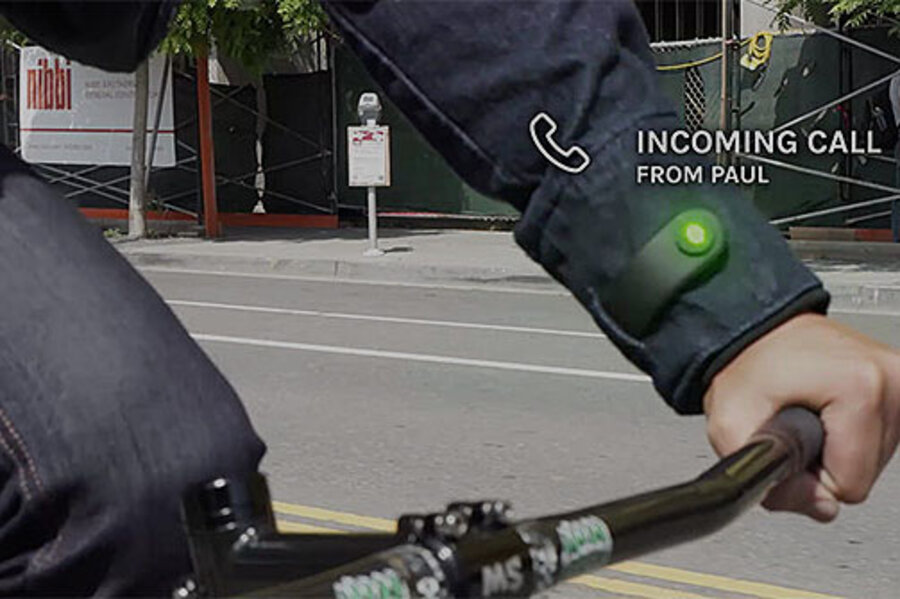Google-Levi's digital jacket: The next big thing in tech?
Loading...
At first glance, the latest advancement in wearable technology appears to be nothing more than a humble denim jacket.
But take a closer look, and you'll find that the first product from Project Jacquard is in fact the result of years of technological innovation from Google's best and brightest.
Attendees of South by Southwest (SXSW) in Austin, Texas, this weekend got a more intimate glimpse into Project Jacquard, the collaboration between Google and Levi's that has thus far produced what has been described as the first "smart jacket." The interactive jacket, intended to serve as a tool for bike commuters hoping to avoid the dangers of fiddling with a cellphone while en route, was first announced last May. But the recent SXSW panel gave project leaders from Google and Levi's an opportunity to further explain the origins and goals of Project Jacquard, and the public a chance to test the still-in-beta technology for themselves.
Unlike wearable predecessors such as Google Glass or the Apple Watch, the Jacquard commuter jacket doesn't have an obvious display screen. Instead, users can control certain actions on their smartphone by tapping and swiping a nearly invisible fabric touch interface woven into the left wrist of the jacket. The project uses special Jacquard yarn, which combines a conductive metal alloy with traditional fabric and "makes it possible to weave touch and gesture interactivity into any textile using standard, industrial looms."
The only visible piece of technology on the commuter jacket is a small clip located on the left sleeve cuff, as The Christian Science Monitor reported in May. But, project leaders explained over the weekend, it wasn't always designed that way.
"At first, we wanted to put a display on it, the bigger the better," said Ivan Poupyrev, technical program lead at Google’s Advanced Technology And Products (ATAP) group, during the SXSW panel. "But Paul said 'no, there can’t be blinks on the jacket, we don’t do that. Our customers are cool urban people and blinking on your jacket is uncool.' "
The Jacquard commuter jacket is designed as a fully functional denim jacket that one can wear every day. But with that functionality came another challenge for its creators: making it machine washable.
"It became the ultimate tension between our expertises – you don’t drop your smartphone in there," Paul Dillinger, vice president for global innovation at Levi's, told SXSW attendees.
The solution? Placing some of the jacket's technology in what could be described as an extended USB drive. To enable the garment's digital capabilities, wearers plug the USB into a small inlet on the underside of the left wrist. Remove it, and it's essentially just another jacket.
Unlike Google Glass, which aimed to dazzle users with new augmented reality technology, the Jacquard commuter jacket doesn't have capabilities beyond those offered on the average smartphone. Its primary benefits, as touted in a promotional video, are the wearer's ability to swipe from one song to another and get map updates without having to pull out a cellphone or glance at a smart watch.
But that functional simplicity, coupled with its inconspicuous design, may be what ultimately attracts consumers.
"I imagine some people will buy into Levi’s Jacquard jacket for reasons only partially related to the fact that it has conductive fibers woven into it," writes Nick Statt for The Verge. "That might be exactly what successful wearable tech needs: a product that exists equally in both worlds, without pushing too hard on either its traditional function or its connected features."
The Jacquard jacket is expected to go on sale for $350 in the fall.






